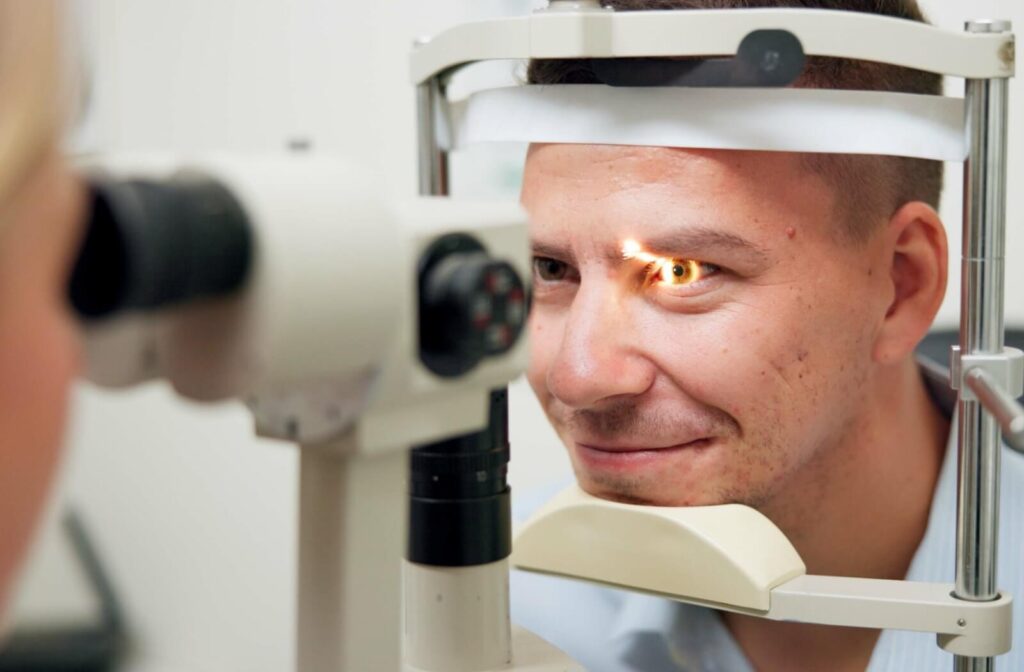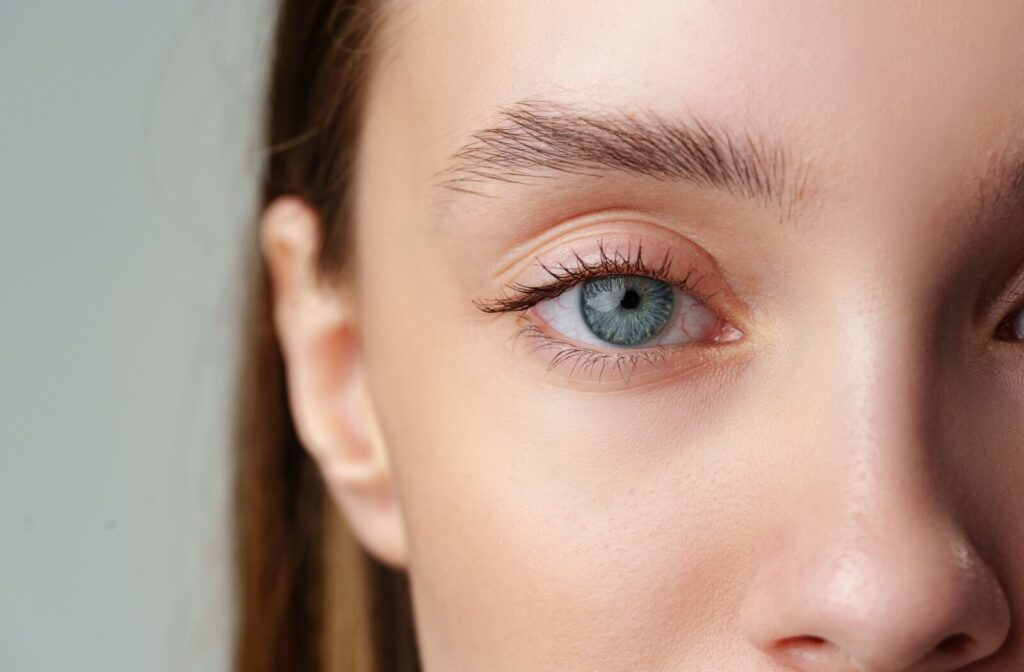You probably think of an eye exam as a way to check your vision for glasses or contacts. But a comprehensive eye exam does so much more. Your eyes offer a clear view of your blood vessels, nerves, and connective tissues, providing a direct look into your body’s overall wellness.
This window into your health means that your eye doctor can see the first signs of health conditions before you exhibit other symptoms. A thorough eye health evaluation can help detect a wide range of diseases, from diabetes to autoimmune conditions, simply by looking at the structures inside your eye. It’s a key part of maintaining your long-term health.
More Than a Simple Vision Test
It’s helpful to know the difference between a vision screening and a comprehensive eye exam. A screening, like one you might have at school or the DMV, only checks how well you see from a distance. In contrast, a comprehensive exam evaluates the complete health of your eyes, from front to back.
What a Comprehensive Exam Includes
During your exam, we look at the internal structures of your eye, including the retina, macula, and optic nerve. The exam is a straightforward and comfortable way to get a full picture of your health.
Your Eyes & Circulatory Health
Many conditions related to your heart and blood vessels can show signs in your eyes. This is because the back of your eyes is the only place in your body where we can get a direct look at your blood vessels.
Here are some of the conditions that a routine exam can discover:
Diabetes
Diabetic retinopathy is a condition that affects blood vessels in the eye. We may notice tiny vessels in your retina that are leaking fluid or blood. These signs can appear before a person is formally diagnosed with diabetes, which makes your eye exam very important for early detection.
High Blood Pressure
Noticeable bends, kinks, or tears in the blood vessels at the back of your eye can point to high blood pressure. These issues are often seen during a dilated eye exam, which allows a direct look at the back of your eye without any invasive procedures.
High Cholesterol
A yellow or blue ring around your cornea could be a sign of high cholesterol, especially in younger individuals. Your eye doctor might also see small cholesterol deposits, called plaques, in the blood vessels of your retina. These signs can indicate that cholesterol levels in your body are elevated.
Heart Disease & Stroke Risk
Sometimes, we can spot tiny blockages or clots in your retinal blood vessels. These can point to an increased risk for a stroke, as they suggest similar blockages may exist elsewhere. An eye exam can also show if you’ve had a small “eye stroke” in the past, which can be related to heart disease.

Brain & Nerve Conditions
Your eyes are directly connected to your brain through the optic nerve. This connection means that an eye exam can help detect certain brain and nerve-related health problems. Changes to the optic nerve can be a signal that something needs further attention.
Brain Tumors
Pressure changes inside the skull can cause swelling or other changes to the optic nerve at the back of your eye. Other signs that can relate to this pressure include a loss of side vision or recent double vision.
Multiple Sclerosis
Inflammation of the optic nerve can be an early indicator of multiple sclerosis (MS), which is why our approach to eye disease diagnosis and management is so thorough. This condition, called optic neuritis, is a common first symptom of MS. It often comes with other signs you might notice, such as:
- Severely blurred vision
- Pain when you move your eyes
- Colors that appear faded or washed out
Autoimmune & Inflammatory Conditions
Autoimmune conditions can cause inflammation throughout the body—including in your eyes. An eye exam can often reveal the first clues of these diseases. This is because inflammation can affect the delicate tissues and structures of the eye.
Rheumatoid Arthritis
A common eye-related sign of rheumatoid arthritis is red eyes with a deep, strong pain. Many people with this condition also experience persistent dry eye. A careful examination can help connect these symptoms to a potential underlying cause.
Thyroid Disease
Protruding eyeballs and retracting eyelids are classic signs of hyperthyroidism, often caused by Graves’ Disease. This condition can also cause other eye-related issues. You might notice symptoms like dry eye, blurry vision, or even vision loss in some cases.
Lupus & Sjögren’s Syndrome
Lupus can cause swelling and inflammation in different parts of the eye, including the retina and the outer layer. Sjögren’s syndrome is an autoimmune disease that attacks the glands that produce tears and saliva.
Schedule Your Exam Before The Year Ends
Regular eye exams are a key part of your overall health care routine. If you have a family history of eye disease, diabetes, or high blood pressure, it’s a good idea to schedule regular visits to your eye doctor.
Eye Symptoms to Note
While many conditions have no early eye symptoms, you should schedule an appointment if you notice any new changes in your vision. Pay attention to anything different, such as:
- Sudden blind spots in your vision
- A “curtain” effect over your field of view
- An increase in floaters or flashes of light
- Blurred or double vision that doesn’t go away
- Persistent eye pain or redness, which may require emergency eye care
Keep Your Vision Clear
We believe in working closely with you to achieve outcomes that enhance both how you see the world and how the world sees you. At Advanced Eye Care & Aesthetics, we want to help you maintain a clear picture of your wellness. Call us today or schedule your comprehensive eye exam online.



